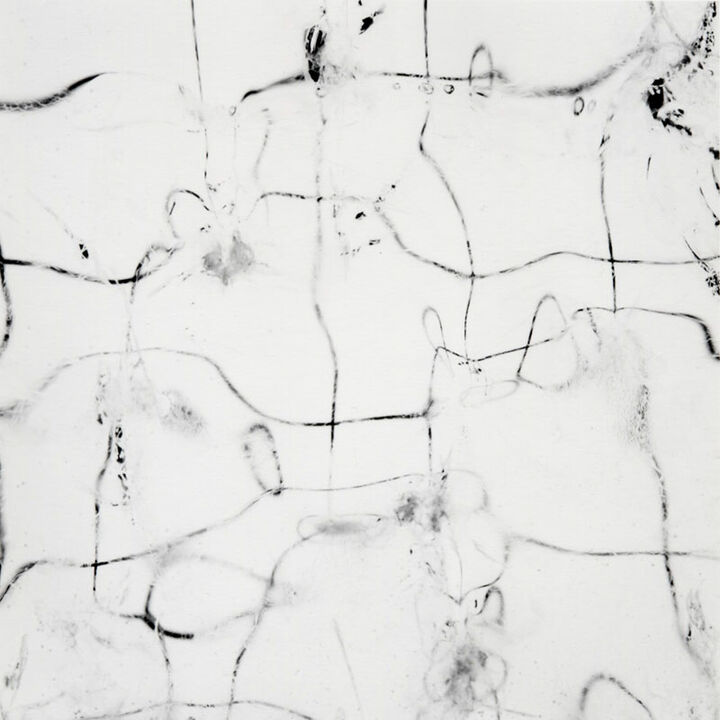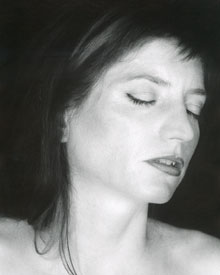Frank Yamrus, San Francisco, California, USA
Frank Yamrus is a fine art photographer who recently relocated to New York City. After twenty years of working, living and playing in San Francisco, Yamrus, with mixed emotions, packed up his studio and returned to his East Coast roots. Rune Lagu – a still life study of plastic water bottles - was the last project he completed in California. In his most recent portfolio, “I Feel Lucky,” Yamrus tackles his midlife crisis and puts himself in the crosshairs of his camera to create a collection of revealing self-portraits. This series opened at ClampArt in Chelsea New York City in February 2012 along with the release of his monograph under the same title. I Feel Lucky next travels to the Albert Merola Gallery in Provincetown, Cape Cod, Massachusetts, Yamrus’ home away from home, to kick off the galleries 2012 Summer Season. During his 25-year photographic career Yamrus has produced many significant portfolios addressing such topics like his relationship with his father, the loss of multiple friends to HIV/AIDS, and love, romance, sex and rapture. His work has been exhibited extensively across the United States and Europe. Yamrus also served as a member of the SF Camerawork Board of Directors from 1999-2003 where he curated exhibitions. From 2004-2009 he served on the Board of Directors for Blue Sky Gallery and from 2009-2012 on their National Advisory Board.
Yamrus’ work has been published in numerous catalogues, books and magazines including: The Unseen Eye, We Were Here (film stills in documentary movie), Harm’s Way, Feminine Persuasion, CrEATe – Eating Designs and Future Foods, Hommes pour Hommes, Eco Homo, 1000 Male Nudes, Whitman’s Men, Fully Exposed, The Male Nude in Photography, The New Yorker, The Paris Review, Zyzzyva, Fisure, Nerve, Digital Camera, Zoo Zoom, The San Francisco Chronicle, Cool Hunting, CPN Magazine, ProfiFoto, Photo District News, Dreamboys, Photo Metro, not only - Blue, and Provocateur.
The Dehon Ice Fields
“Photography’s ability to provide accurate visual information of its subject matter provided the perfect mate for the landscape. As Naomi Rosenblum states in A World History of Photography, “The desire for accurate transcription of scenery of all kinds – natural and constructed- had led to the perfection of the camera obscura in the first place.“ However, landscape’s meaning seems over-simplified if defined solely by sight, disregarding the other senses, and the dynamic relationship of people and place. In this series “The Dehon Ice Fields,” my photographic inspiration embraces the connotative landscape; lines, textures and shapes framed by the camera documenting topography yet suggesting metaphor and ambiguity, perhaps fantasy or mythology.
Fueled by our many associations with water, as well as it’s supremacy in shaping our topography, my inquiry of the landscape genre seemed destined to perpetuate my ongoing photographic relationship with water. Water’s transformative quality – specifically to ice and snow- guided my inquiry towards yet an-other facet of this relationship. This past winter, I was to travel to the Rocky Mountains in southwest Alberta, Canada from Banff National Park to Jasper National Park. Along this 500 miles stretch of the Great Divide, lies the Columbia Ice Fields, traces of the last glaciers that retreated about 10,000 years ago. The Columbia Ice Fields are the largest chain of ice fields along the Great Divide, covering over 324 square kilometers and feeding six major glaciers in the mountains. It is also considered the “hydrographic apex of North America, water melting from the Columbia Ice Fields flows to three oceans, the Atlantic, Pacific and Artic. It was here the geology and geography as well as climate and weather were to serve as my metaphorical backdrop.
With no cooperation from Mother Nature and the limits of time and resources, my trip to The Columbia Ice Fields never happened. These images were created in my studio on Dehon Street in San Francisco, California. Ice, the only constant in this photographic equation, was a momentary absolute. It immediately melted and changed reminding us time is life’s true constant and memory is fogged by time. Water and light were the variables defining lines, textures, and shapes by augmen-tation or obliteration, thus creating the illusion of place. These images beg for a story, a history, memories that only the viewer can provide.”
Frank Yamrus, July 2002

Rapture: The Portrait Series
Foremost, I see this work to be about rapture. These portraits were taken over a four month period from October 99 through January 00. I was interested in capturing intimate and honest moments of "rapture" that we usually do not have the opportunity to witness outside of personal experiences, let alone contemplate in a still photograph.
In this project I have stripped the subject and the viewer of all context and environment to examine these very moments. As a point of departure, I have asked my subjects to masturbate to orgasm(s). Much of this project was about trust and comfort level; therefore the images were shot in my home. Each subject was photographed from the initial moment of stimulation through 8-10 minutes after orgasm(s). The first 20-30 images were about establishing a deeper comfort level, another level of trust. In order to attain a state of "rapture" the subject(s) needed to let go. In many of the images, the subject appears to have reached this level while other images represent the struggle of this process and reflective of certain truths.
The editing process brought me to the images before you. The window of time represented in this collection of images is approximately 4 minutes before orgasm to approximately 4 minutes after orgasm. There are a few images that are the actual moment of climax, but the work is not specifically about orgasm, but about rapture. Although the physiology of the physical crisis is unavoidable, I am more interested in the psychology of this time frame. These photographs represent a blending of the psychology and physiology surrounding this event. Frank Yamrus Spring 2000

Collections
Victoria and Albert Museum, London, United Kingdom
Los Angeles Contemporary Museum of Art, Los Angeles USA
Kinsey Institute of Indiana University, USA
Santa Barbara Museum of Art, USA
Museum of Fine Arts, Houston, USA
the University of Maryland, USA
Denver Art Museum, USA
Southeast Museum of Photography, USA
the Worcester Art Museum, USA
Provincetown Art Association and Museum, USA








